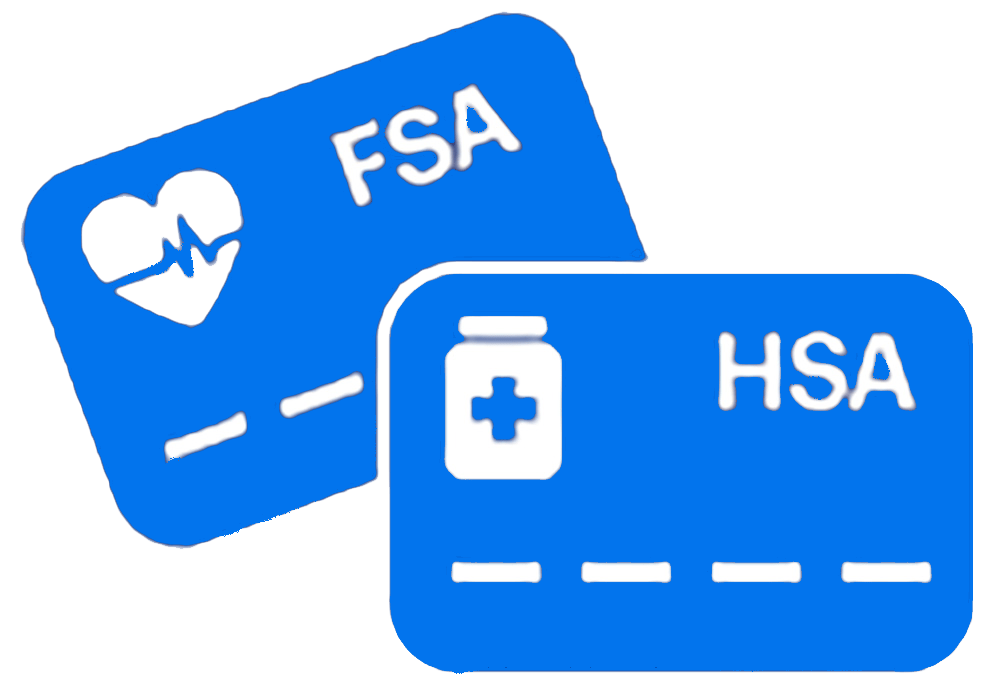Semaglutide is a medication used for the treatment of type 2 diabetes and weight management. It is available in both oral tablet and subcutaneous injection forms. The dosage and frequency of administration depend on the specific indication and individual patient factors. In this article, we will explore how often semaglutide is taken and the recommended dosage based on the latest medical guidelines and research.
Understanding Semaglutide
Semaglutide belongs to a class of medications known as glucagon-like peptide-1 receptor agonists (GLP-1 RAs). It works by mimicking the action of the naturally occurring hormone GLP-1, which helps regulate blood sugar levels. Semaglutide helps control blood glucose, promotes weight loss, and reduces the risk of cardiovascular events in patients with type 2 diabetes.
Semaglutide Dosage Forms
Semaglutide is available in different dosage forms, including oral tablets and subcutaneous injections. The oral tablet form is marketed under the brand name Rybelsus, while the subcutaneous injection form is marketed as Ozempic for diabetes treatment and Wegovy for weight management.
Dosage for Type 2 Diabetes
Oral Tablets
For the treatment of type 2 diabetes, the initial dose of semaglutide oral tablets is 3 mg taken orally once a day for the first 30 days. After the initial month, the dose is increased to 7 mg taken orally once a day. If additional glycemic control is needed, the dose can be further increased to a maximum of 14 mg orally once a day. It is important to note that taking two 7 mg tablets to achieve a 14 mg dose is not recommended.
Subcutaneous Injections
The subcutaneous injection form of semaglutide is initiated at a lower dose compared to the oral tablets. The initial dose is 0.25 mg administered subcutaneously once a week for the first 4 weeks. After 4 weeks, the dose is increased to 0.5 mg subcutaneously once a week. If further glycemic control is required, the dose can be increased to a maximum of 1 mg subcutaneously once a week.
Switching between subcutaneous administration and oral tablets can also be considered. Patients receiving 14 mg of semaglutide orally once a day can be transitioned to 0.5 mg subcutaneously once a week. Conversely, patients receiving 0.5 mg subcutaneously once a week can be switched to 7 or 14 mg orally once a day. However, there is no recommended oral equivalent dose to replace a subcutaneous dose of 1 mg weekly.
Dosage for Cardiovascular Risk Reduction
Semaglutide is also used for reducing the risk of major adverse cardiovascular events (cardiovascular death, non-fatal myocardial infarction, or non-fatal stroke) in adults with type 2 diabetes and established cardiovascular disease.
Oral Tablets
The recommended dosage for cardiovascular risk reduction with semaglutide oral tablets is the same as that for type 2 diabetes. The initial dose is 3 mg taken orally once a day for the first 30 days, followed by an increase to 7 mg once a day. If additional glycemic control is needed, the dose can be further increased to a maximum of 14 mg once a day.
Subcutaneous Injections
The subcutaneous injection form of semaglutide is also used for reducing cardiovascular risk in patients with type 2 diabetes and established cardiovascular disease. The dosing regimen is the same as that for type 2 diabetes: an initial dose of 0.25 mg subcutaneously once a week for 4 weeks, followed by an increase to 0.5 mg once a week. If additional glycemic control is needed, the dose can be increased to a maximum of 1 mg once a week.
Dosage for Weight Loss
Semaglutide has also shown efficacy in promoting weight loss in adults with obesity or overweight. The dosing regimen for weight management differs from that of type 2 diabetes and cardiovascular risk reduction.
Initial Dose Escalation Schedule
The initial dose escalation schedule for weight loss with semaglutide is as follows:
- Weeks 1 through 4: 0.25 mg subcutaneously once a week
- Weeks 5 through 8: 0.5 mg subcutaneously once a week
- Weeks 9 through 12: 1 mg subcutaneously once a week
- Weeks 13 through 16: 1.7 mg subcutaneously once a week
Maintenance Dose
After week 16, the maintenance dose for weight loss is 2.4 mg subcutaneously once a week.
It is important to note that if dose escalation is not tolerated, the dose escalation schedule can be delayed for 4 weeks. Additionally, if the maintenance dose of 2.4 mg once a week is not tolerated, the dose can be temporarily decreased to 1.7 mg once a week for a maximum of 4 weeks. After 4 weeks, the dose should be increased back to 2.4 mg once a week. If the patient cannot tolerate the maintenance dose of 2.4 mg once a week, discontinuation of therapy should be considered.
Additional Considerations and Precautions
While semaglutide is generally well-tolerated, there are some important considerations and precautions to keep in mind.
Renal and Liver Dose Adjustments
No dose adjustments are recommended for patients with impaired renal or liver function. However, specific data on the use of semaglutide in patients undergoing dialysis is limited.
Dose Adjustments with Insulin Secretagogues
Concomitant use of semaglutide with insulin secretagogues (e.g., sulfonylureas) or insulin increases the risk of hypoglycemia, including severe hypoglycemia. In such cases, a reduced dose of insulin secretagogue or insulin may be necessary to mitigate the risk.
Precautions and Contraindications
Semaglutide carries a boxed warning regarding the risk of thyroid C-cell tumors in rodents. While it is unknown if semaglutide causes thyroid C-cell tumors in humans, it is contraindicated in patients with a personal or family history of medullary thyroid carcinoma (MTC) or multiple endocrine neoplasia syndrome type 2 (MEN 2).
Other precautions include avoiding the use of semaglutide in patients with a prior serious hypersensitivity reaction to semaglutide or its excipients. Hypersensitivity reactions, including anaphylaxis and angioedema, have been reported with the subcutaneous formulation. Semaglutide should not be used in patients with type 1 diabetes mellitus or for the treatment of diabetic ketoacidosis.
Administration and Storage
Semaglutide oral tablets should be taken orally with no more than 4 ounces of plain water at least 30 minutes before the first food, beverage, or other oral medications of the day. The tablets should be swallowed whole and should not be split, crushed, or chewed. The subcutaneous injection should be administered once a week into the abdomen, thigh, or upper arm, using a different injection site each week.
Storage requirements vary depending on the formulation. The oral tablets should be stored in their original blister card in a dry place away from moisture. The subcutaneous injection should be refrigerated prior to the first use and should not be frozen. After the first use, it can be stored at controlled room temperature or refrigerated, depending on the specific product.
Monitoring and Patient Advice
Regular monitoring of blood glucose and hemoglobin A1C is recommended to assess the efficacy of semaglutide treatment. Patients should also be monitored for renal function, heart rate, signs and symptoms of pancreatitis, worsening diabetic retinopathy, and symptoms of thyroid tumors. Additionally, patients should be advised to report any changes in vision, symptoms of dehydration, and signs of thyroid tumors promptly.
Patients should be informed about the potential gastrointestinal adverse reactions associated with semaglutide and the importance of taking measures to avoid dehydration. They should also be educated about the risk of hypoglycemia, how to recognize and manage it, and the precautions to take while driving or using machinery. Women of childbearing potential should discuss pregnancy plans with their healthcare provider due to the potential risk to the fetus.
Frequently Asked Questions
- Tirzepatide vs. semaglutide: How do they compare?
- Tirzepatide and semaglutide are both GLP-1 receptor agonists used for the treatment of type 2 diabetes. They have similar mechanisms of action but differ in their dosing regimens and specific clinical trial data.
- How does semaglutide work for weight loss?
- Semaglutide promotes weight loss by reducing appetite, increasing feelings of fullness, and slowing down stomach emptying. It helps individuals with obesity or overweight reach their weight loss goals when used in conjunction with a reduced-calorie diet and increased physical activity.
- Why am I not losing weight on Ozempic?
- Weight loss response to Ozempic can vary among individuals. If you are not experiencing weight loss while taking Ozempic, it is important to discuss your concerns with your healthcare provider. They may recommend adjustments to your diet, exercise routine, or medications.
- How does Ozempic affect blood pressure?
- Ozempic has been shown to have a modest blood pressure-lowering effect in patients with type 2 diabetes. It may help reduce both systolic and diastolic blood pressure levels.
- What is Ozempic face, and how can I avoid it?
- “Ozempic face” refers to the loss of facial fat that can occur as a side effect of semaglutide treatment. To minimize this effect, it is important to maintain a healthy overall weight, exercise regularly, and follow a balanced diet.
- What foods should I eat or avoid when taking Rybelsus?
- When taking Rybelsus, it is important to follow a healthy, balanced diet. Focus on consuming nutrient-dense foods, including fruits, vegetables, whole grains, lean proteins, and healthy fats. Avoid excessive consumption of high-calorie, sugary foods and beverages.
- Why does Ozempic cause a dry mouth or taste changes?
- Dry mouth or taste changes can occur as side effects of Ozempic. These side effects are generally mild and temporary. Staying hydrated and practicing good oral hygiene can help alleviate these symptoms.
- Does Wegovy make you urinate a lot or change the smell of urine?
- Increased urination and changes in urine smell are not commonly reported side effects of Wegovy. If you experience these symptoms or have concerns, it is advisable to consult your healthcare provider.
- Does Ozempic make you urinate more frequently?
- Increased urination frequency is not commonly reported as a side effect of Ozempic. If you experience changes in urination patterns or have concerns, it is recommended to consult your healthcare provider.
Conclusion
Semaglutide is a valuable medication used for the treatment of type 2 diabetes and weight management. The dosage and administration of semaglutide depend on the specific indication, with different dosing regimens for type 2 diabetes, cardiovascular risk reduction, and weight loss. It is important to follow the recommended dosage and administration instructions provided by your healthcare provider and to discuss any concerns or questions you may have. Semaglutide can be an effective tool in achieving glycemic control, reducing cardiovascular risk, and promoting weight loss when used in conjunction with a healthy lifestyle. Call us at 205-352-9141.










